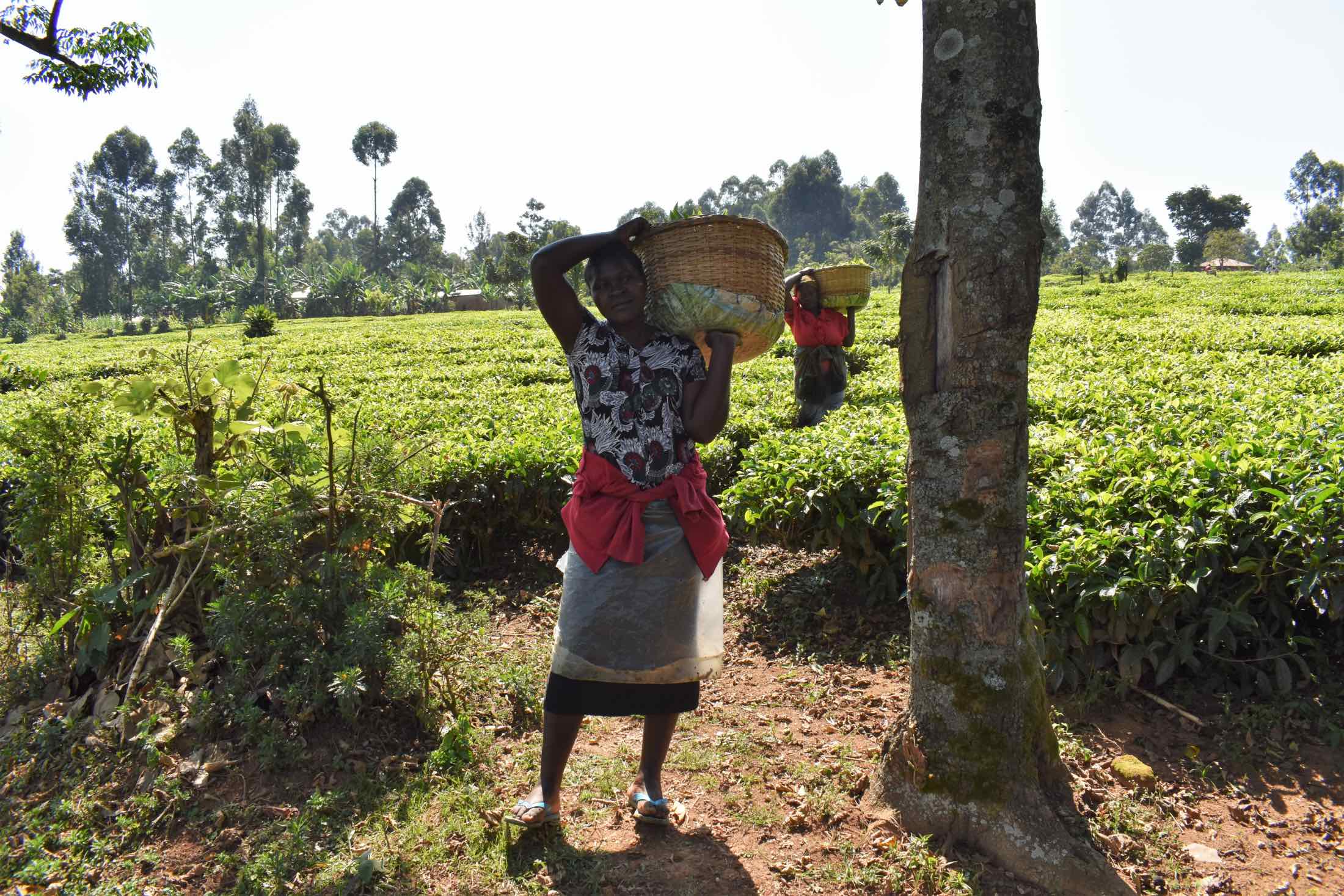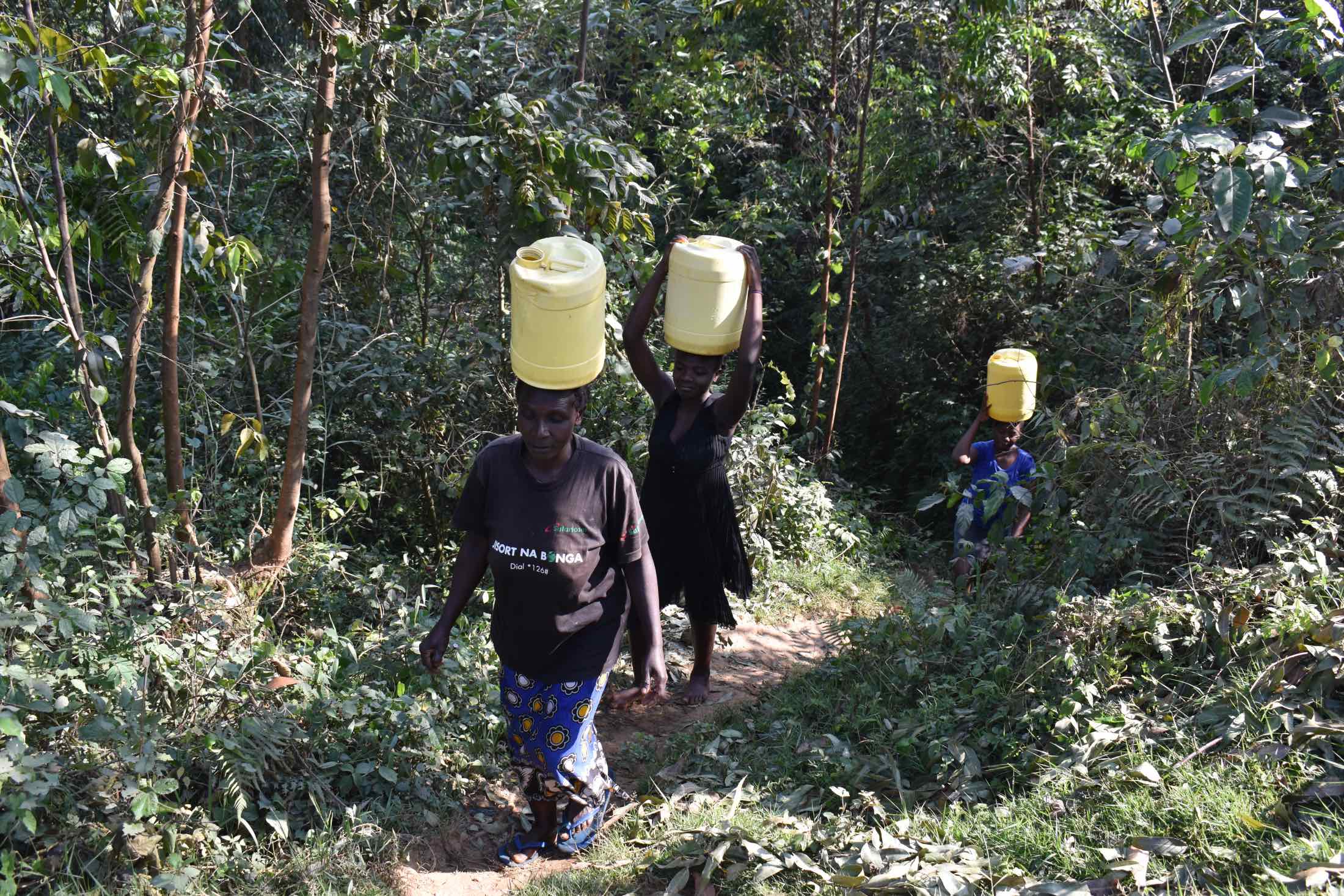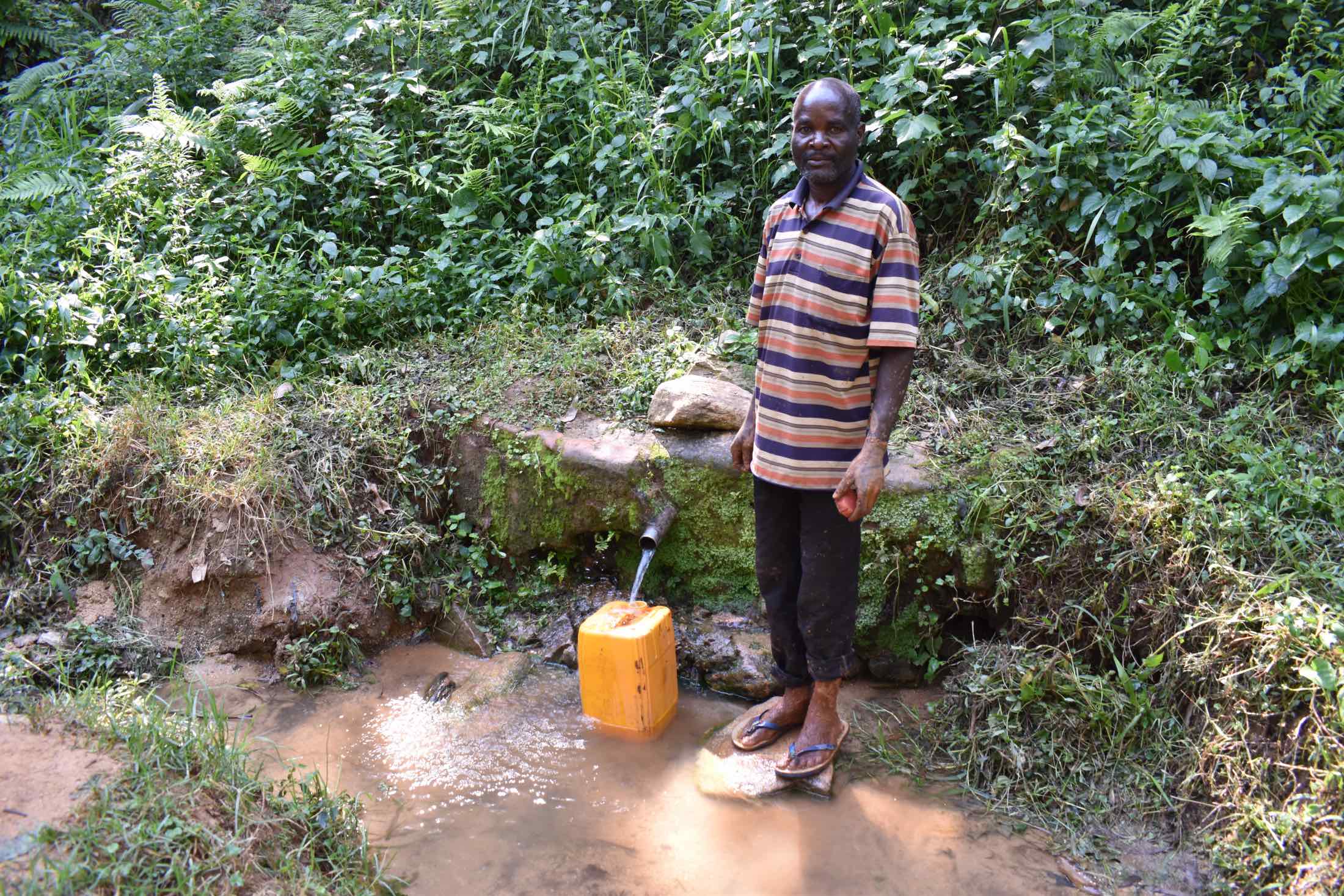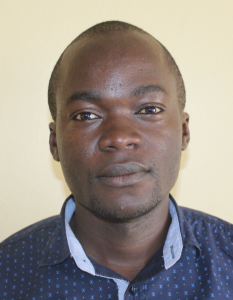The community of Chepkuony in Western Kenya is densely populated, with clay homes scattered throughout the rough landscape. The dirt roads surrounding the community are bumpy, which makes access during the rainy season especially difficult.
Agriculture is the most practical activity the majority of families rely on to meet their daily needs and pay their children's school fees. Tea (in the photo below) is the most common cash crop, but maize, beans, and bananas are also grown on a smaller scale for subsistence purposes.

Lwandoni Spring currently serves 150 community members. The area is steep, with no stairs, making it difficult to access. Water surrounds the collection area. People contract bacterial infections and other diseases (cholera and typhoid) because the entire source is open to waste products. The water has fungus and mold that changes the water's color and makes it unsafe for human consumption. But those drinking and using the water daily have no other choice.

"It has taken God's grace for me to be the way [I] am. We have been affected mostly by the use of this water, which, when [we] use it, causes diseases such as cholera, typhoid, and sore throat," said Hellen M.
Accessing water is a challenge, especially during the peak collection times in the morning and evening when the majority of people want to fetch water and the spring is overcrowded.
The level of hygiene in this community is suffering due to a lack of water. Community members delay tasks like washing clothes, bathing, and cooking. They avoid regular daily business and farming activities because they require collecting water.

"[The] majority of us have been born in this area. The source was used by our grandparents. It's been a major problem for us, especially as parents. Our children contract diseases, causing them to be absent. Our time is wasted when we should be attending to our work. Expectant mothers and old age people can not access [the spring] due to poor stairs," said Peter Linganga, a local farmer, collecting water in the photo above.
What We Can Do:
Spring Protection
Protecting the spring will help provide access to cleaner and safer water and reduce the time people have to spend to fetch it. Construction will keep surface runoff and other contaminants out of the water. With the community’s high involvement in the process, there should be a good sense of responsibility and ownership for the new clean water source.
Fetching water is a task predominantly carried out by women and young girls. Protecting the spring and offering training and support will, therefore, help empower the female members of the community by freeing up more of their time and energy to engage and invest in income-generating activities and their education.
Training on Health, Hygiene, COVID-19, and More
To hold trainings during the pandemic, we work closely with both community leaders and the local government to approve small groups to attend training. We ask community leaders to invite a select yet representative group of people to attend training who will then act as ambassadors to the rest of the community to share what they learn. We also communicate our expectations of physical distancing and wearing masks for all who choose to attend.
The training will focus on improved hygiene, health, and sanitation habits in this community. We will also have a dedicated session on COVID-19 symptoms, transmission routes, and prevention best practices.
With the community’s input, we will identify key leverage points where they can alter their practices at the personal, household, and community levels to affect change. This training will help to ensure participants have the knowledge they need about healthy practices and their importance to make the most of their water point as soon as water is flowing.
Our team of facilitators will use a variety of methods to train community members. Some of these methods include participatory hygiene and sanitation transformation, asset-based community development, group discussions, handouts, and demonstrations at the spring.
One of the most important issues we plan to cover is the handling, storage, and treatment of water. Having a clean water source will be extremely helpful, but it is useless if water gets contaminated by the time it is consumed. We and the community strongly believe that all of these components will work together to improve living standards here, which will help to unlock the potential for these community members to live better, healthier lives.
We will then conduct a small series of follow-up trainings before transitioning to our regularly scheduled support visits throughout the year.
Training will result in the formation of a water user committee, elected by their peers, that will oversee the operations and maintenance of the spring. The committee will enforce proper behavior around the spring and delegate tasks that will help preserve the site, such as building a fence and digging proper drainage channels. The fence will keep out destructive animals and unwanted waste, and the drainage will keep the area’s mosquito population at a minimum.

 Protected Spring
Protected Spring
 Rehabilitation Project
Rehabilitation Project






































